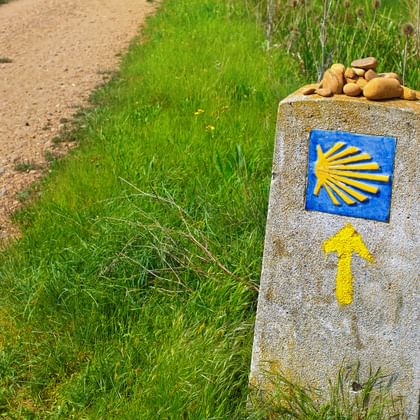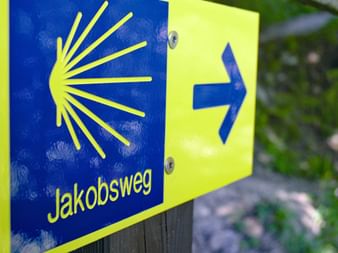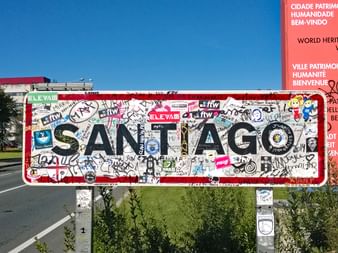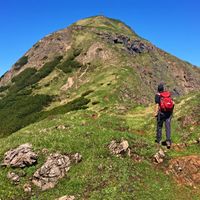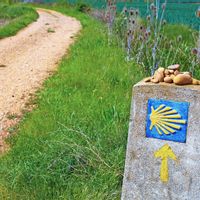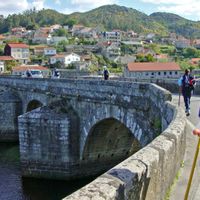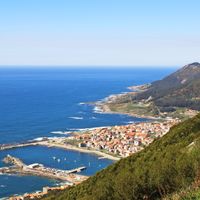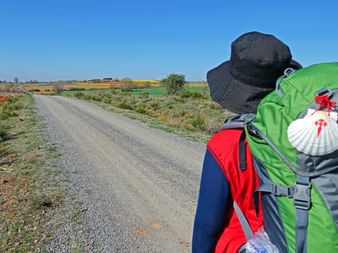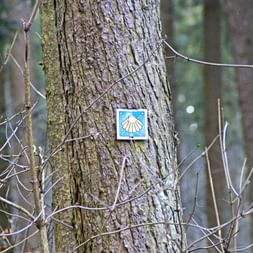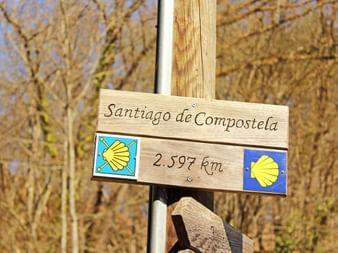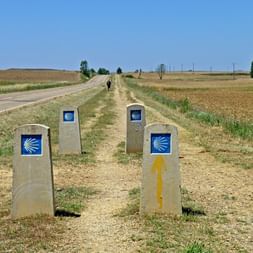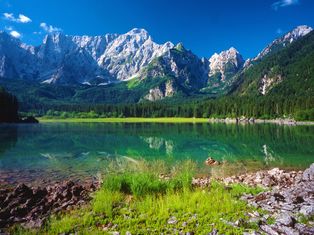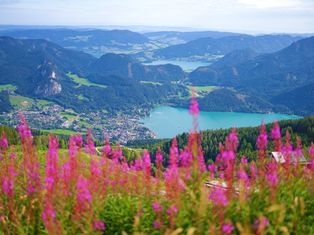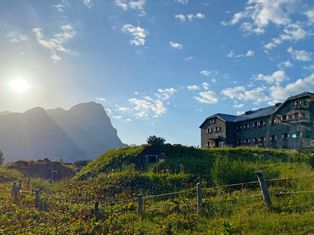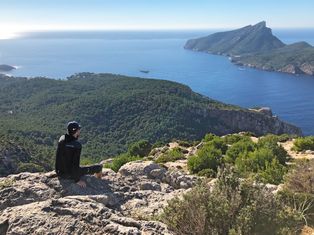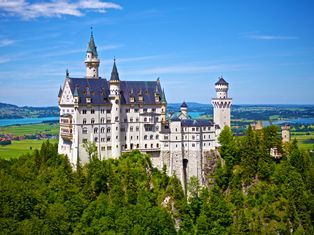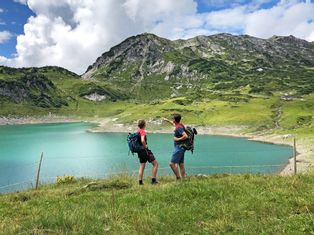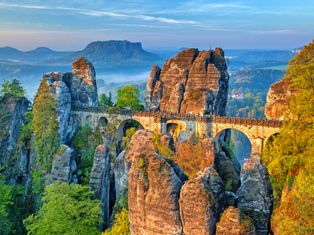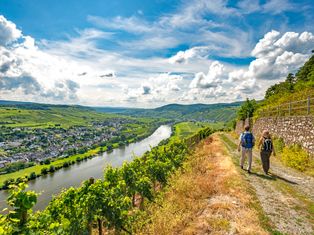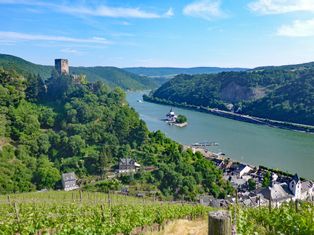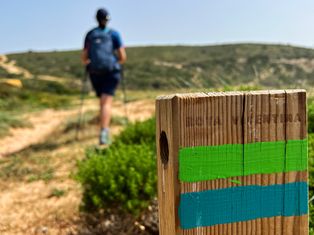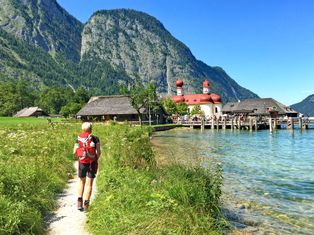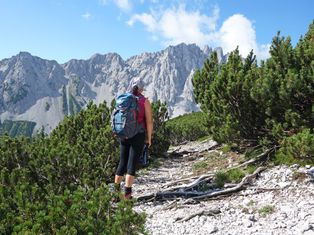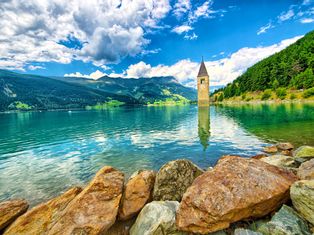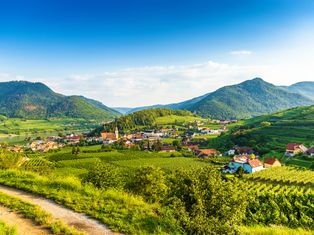Basic information about the Way of St. James
The history of the famous Way of St. James goes back to the year 1047. In this year, the Way of St. James was mentioned for the first time. Alongside the important pilgrimage destinations of Rome and Jerusalem, the burial place of St. James – patron of pilgrims and national saint in Spain – in Santiago de Compostela became one of the main destinations for Christian pilgrims. The Way of St. James is a collective term for the many pilgrimage routes across Europe. As early as the Middle Ages, many of the main routes along the Way of St. James developed along with churches, chapels and simple hostels. Every year, thousands of pilgrims set out on the Way and experience the magic of walking for themselves.
The Way of St. James begins at a different place for every pilgrim, but always right on your own doorstep. The route has good signposting featuring a yellow shell and arrows and makes orientation easy. If you would like to become an official pilgrim of the route, you need a pass and must walk the last 100km by foot, or the last 200km with a bike or on horseback. The pilgrim pass is stamped after every stage in one of the hostels, bars, churches or by private individuals. There is also a pass for dogs so you can enjoy the Way of St. James with your four-legged friend on a hiking holiday with your dog.
The most beautiful hiking tours on the Way of St. James
Hiking on the Way of St. James in Austria
The hiking network of the Way of St. James stretches across the whole of Europe, so also in Austria. In Austria you will find any routes and hiking paths, that are part of the Way of St. James. The first main path leads on the ‘Way of St. James Austria’ from East to West Austria. The exact route goes from Wolfsthal in Lower Austria, via Vienna into the Danube valley, to Linz, Salzburg, on via the small ‘Deutsche Eck’ into the Inn Valley, to Innsbruck, Arlberg and finally to Feldkirch. You can experience part of this wonderful route on our Pilgrim Trail from Salzburg to Tyrol. Over eight days and six hiking stages dreamy mountains, lakes and unspoiled natural landscapes will greet you. The second main route of the Way of St. James in Austria runs from Graz to the Drau Valley in Carinthia, to Lienz in East Tyrol, to South Tyrol or Bruneck and Brixen in Italy and finally to the Eisack Valley. You can experience part of the Tyrolean section of the Way of St. James on our hiking tour Enchanting Kitzbühel with Charm. Whichever route on the Way of St. James you choose, you are guaranteed wonderful hiking trails, unspoiled natural areas and some relaxing time out while hiking.
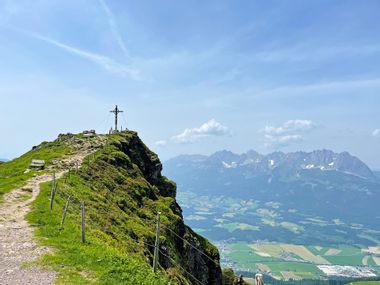
Hiking on the Way of St. James in Germany
Did you know that there are also routes on the Way of St. James in Germany? The varied hiking routes along the Way of St. James stretch across all points of the compass and are also wonderfully suitable for shorter pilgrimages. In the north of the country you will find, for example, the Via Baltica, the Way of St. James in northern Germany, or the Via Jutlandica. In central Germany you can travel on the Via Regia or on the Way of St. James in Saxony-Anhalt. In the west you will also find many routes on the Way of St. James, for example, in Westfalia or in the Rheinland. A little more south you can walk on the East Bavarian Way of St. James or the Upper Swabian Way of St. James. You can experience a particularly beautiful section of the Way of St. James in southern Germany on our walking tour from Munich into Allgäu. Starting from the Bavarian capital of Munich, you will go on a pilgrimage on wonderful hiking trails via Dießen to Weilheim and finally to Füssen. The daily stages are set at around 5.5 hours and are perfectly manageable with a good basic level of fitness.
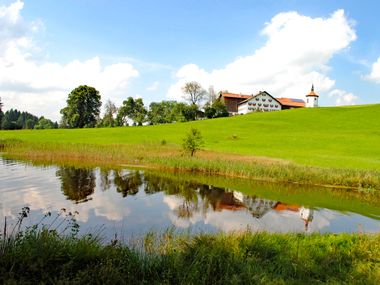
Hiking on the Way of St. James in Spain
The best known and internationally most popular Way of St. James is the so-called "Camino Francés" in Spain, which has been a UNESCO World Heritage Site since 1993. About two thirds of all pilgrims choose this hiking trail for their pilgrimage. A whole 800 kilometres of hiking adventure await you on the well-maintained and well-signposted route between St. Jean Pied de Port on the Spanish-French border and Santiago de Compostela in Spain. This pilgrimage route leads through different climatic zones and parts of the country in Spain – a varied active experience is therefore guaranteed. On our hiking tour Camino de Santiago „Camino Francés“ you will walk the last 100 kilometres of the Way of St. James over eight days. The route leads from Sarria to Portomarín, Palas de Rei, Arzúa, to O Pino or O Pedrouzo and finally to your long-awaited hiking destination, the pilgrim capital Santiago de Compostela. But there are also various ways to discover the Way of St. James in Spain, such as the coastal Camino del Norte, the Camino Primitivo or the Via de la Plata. The ideal time of year for walking the Camino Francés is spring and autumn.
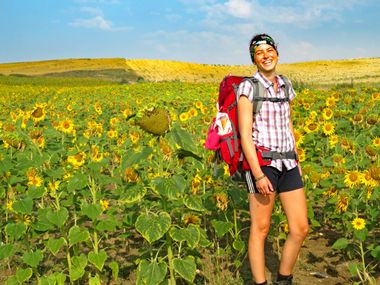
Hiking on the Way of St. James in Portugal
The Camino Portugues falls directly after the Camino Francés as the second most popular routes on the St. James Way. It leads through Spain and Portugal and allows for a cross-border hiking experience. So hikers can experience the culture, cuisine and natural landscape of two countries. Also here the routes are well signposted and the infrastructure along the way is good. Total length of the Camino Portugues covers 240 kilometres and the hiking paths are mostly flat and easy to walk. This route on the Way of St. James begins in the city of Porto and takes you north from there to Santiago de Compostela. Our hiking tour Portuguese Way of St James provides fantastic hikes through beautiful natural areas between Valença, Pontevedra and your final stage destination in Santiago de Compostela. The tour can be booked as early as March and provides a wonderful hiking break until the end of October.
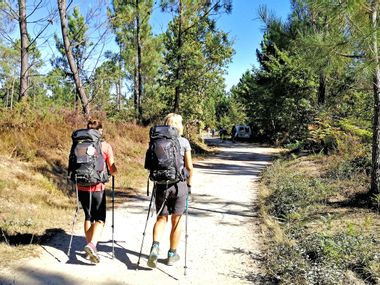
The most beautiful Eurohike moments on the Way of St. James
- Picturesque lake district in Salzburg Land: Right at the beginning of your hiking tour Pilgrim Trail from Salzburg to Tyrol, the dreamlike Trumer Seengebiet awaits you. Here you have the choice between the Mattsee, the Obertrumer See and the Grabensee. Especially in the warmer season, there are plenty opportunities to cool off.
- Nature and culture in Bavaria: On our hiking tour from Munich into Allgäu, the last stage leads to the picturesque Forggensee, to Neuschwanstein Castle and past the Schwansee to the spa town of Füssen. Absolutely recommended for all nature and culture fans.
- The queen of all pilgrimage routes: Experience the most famous section of the Camino de Santiago at first hand. Our hiking tour Camino de Santiago „Camino Francés“ takes you on the last 100 kilometres from Sarria to Santiago de Compostela. Don't forget your pilgrim's pass with stamp after each stage. A walking tour that you will remember for a long time.
- Benefit for body and soul: Our hiking tour Portuguese Way of St James provides wonderful moments of peace and time to slow down. Do something good for your body and relax in the thermal springs in the spa town of Caldas de Reis. With temperatures ranging from 15 to 72 degrees Celsius, these healing springs are particularly beneficial.
Route guidance of the Way of St. James
Varied hiking and pilgrimage adventures across Europe
Unlike many hiking trails, the Way of St. James does not follow a specific route from one place to the next. Rather, the popular pilgrimage route consists of numerous paths that lead throughout Europe. Accordingly, the levels of difficulty of the individual hiking trails are also different, which provide suitable options for an active break for all fitness levels and hiking types. All Eurohike walking holidays on the Camino de Santiago are classified under our walking type ‘Walking’ and offer a wonderful active time for beginners or newcomers with a good basic level of fitness, as well as hikers who enjoy walking for around five hours a day. Many of the routes on the Way of St. James are also wonderfully suitable for walking tours with children or a walking holiday with a dog.
- Our tip for your next hiking tour on the Camino de Santiago: With the Eurohike Travel Checklist, you are guaranteed to be well equipped for your active adventure and not to forget any important equipment at home.
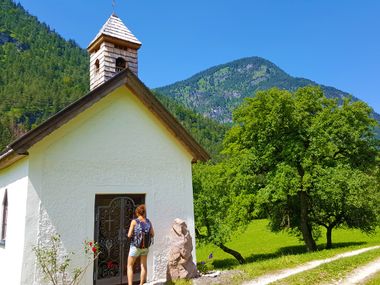
Facts and details about the Way of St. James
- Location: The Way of St. James routes stretch across Europe and have a common destination – the tomb of the Apostle James in Santiago de Compostela in Spain.
- Length: The length of the Way of St. James in Europe is completely different. In principle, the Way of St. James can start right on your doorstep.
- Season: As different as the routes of the Way of St James across Europe are, so are the climatic zones. Depending on the route of your Way of St. James and thus the choice of destination, the climatic conditions are also different. Our hiking tours can be booked from March or April to October, depending on the destination.
- Route network: There are numerous Way of St James routes across Europe, for example through Germany, Austria, Switzerland, France, Poland, Portugal, Italy and Spain.
- Signposting: The Way of St. James is well signposted with the symbol of a yellow scallop shell on a blue background and often supplemented by yellow arrows throughout Europe. The scallop shell serves as a typical pilgrim's badge, orientation aid and, in times past, as a utensil for drawing water.
- Tour character: Depending on the choice of your individual hike on the Way of St. James, the level of challenge also varies. The Eurohike hiking tours on the Way of St. James over several days are assigned to our level of hiking 'Walking'.
